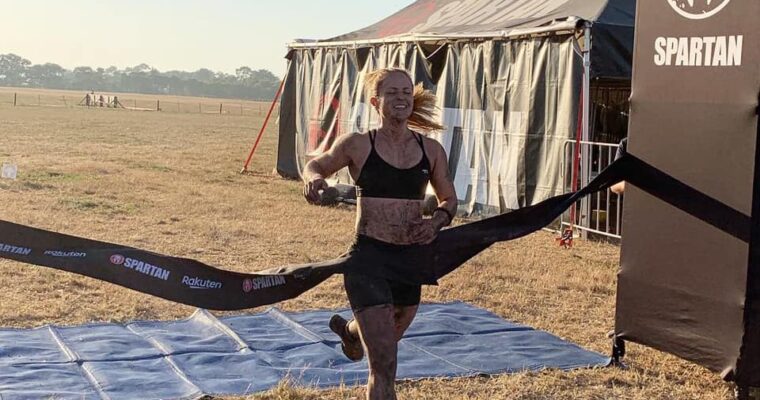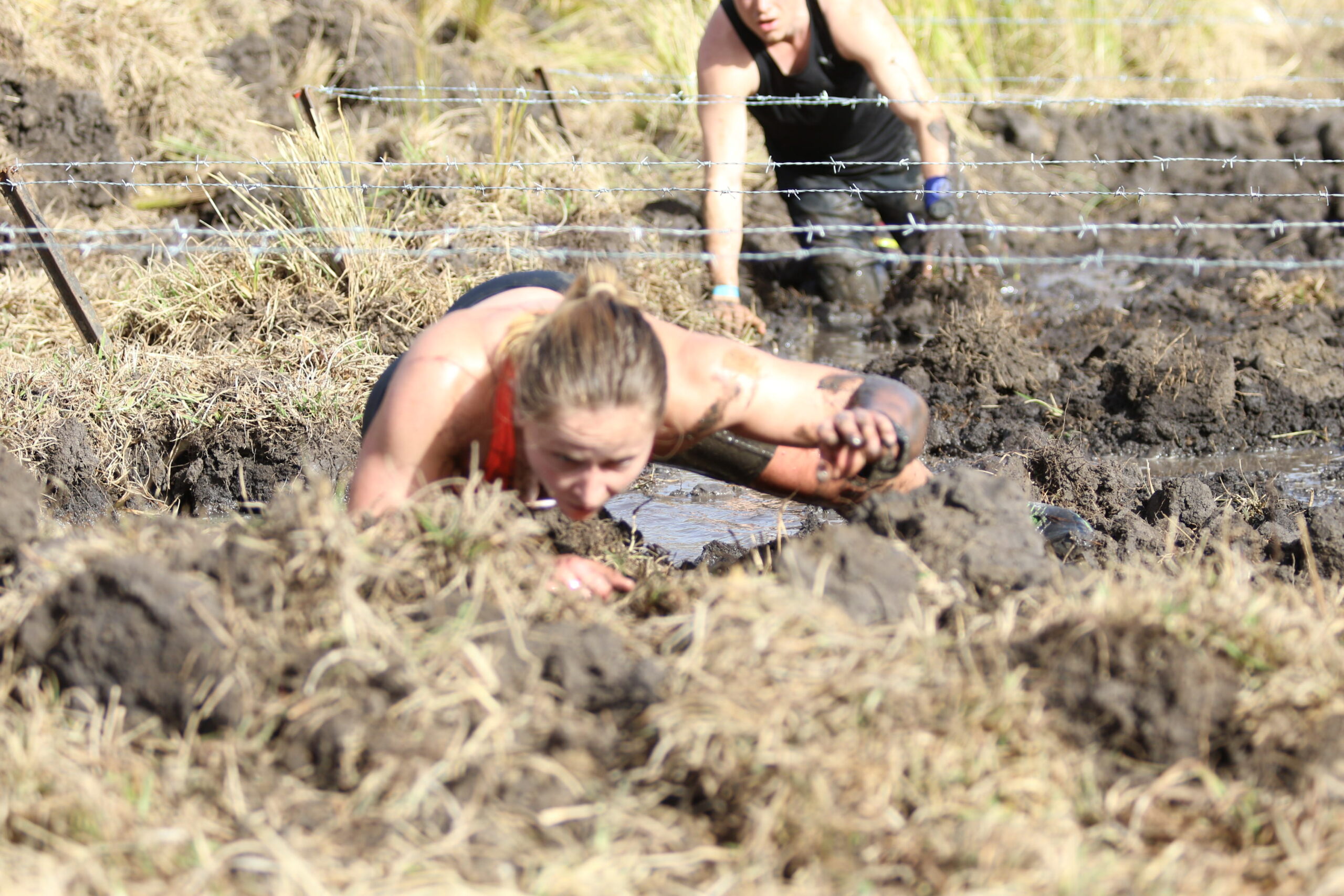If you are considering entering your first elite obstacle course race there are a few things you need to consider before signing up.
What is the elite heat?
In obstacles course racing, the first race of the day is ordinarily an elite or competitive heat where entrants race a standardised, supervised and timed course for podium places. Elite races have prizes, special bling, or sponsor gifts for place getters. Racers are supervised more closely than in open heats to ensure obstacle and penalty completion. You usually have to pay $20-$50 in addition to the ordinary entry price to race the elite wave. Some events also have age group categories that run soon after the elite wave and this might be a good option to try before racing elite if you would like a stepping stone race.
Why should I run the elite heat?
The elite heat is usually associated with shirtless men and women in crops looking fierce at the start line. Don’t be put off, there are only a few people in the elite heat who are actually elite, professional or super-fast runners and the first race of the day is open to anyone. Reasons you might want to enter the elite wave include:
- You have done a few open races and would like to challenge yourself
- You would like an accurate time so you can compare yourself to other racers who also strictly followed the rules for obstacle completion and penalties
- You love to compete and open wave does not feel competitive enough for you
- You want the satisfaction of pitting yourself against the best
- You want to win some prize money
- You like to race first in the day, you are an early morning person (elite races generally start at 6:30-8am)
- You like to do the course when it is relatively fresh and not cut up by hundreds of people (but you also don’t mind spider webs, frost, dewy and slippery surfaces, etc which first through the course have to deal with).
There are a wide variety of people who enter elite races, so don’t hold back if you would like to enter. Usually there are no course cut off times for the elite heat, so even if you think you will be relatively slow or towards the back of the pack that should not stop you entering if you would like to give it a go.
Important points
Follow obstacle rules and penalties
Elite races are standardised and supervised meaning you will be expected to follow all the rules for obstacle completion and to perform any penalties required. It is your responsibility to know and understand the rules for each obstacle, not the volunteers on course. Make sure you have read and understood the obstacle guide and know how to complete 30 burpees. You are setting an example of where you can go if you work hard for those watching. Please be polite and appreciative to all volunteers and make sure you don’t leave any litter on course.
Wear all the sweat bands
You will ordinarily be required to wear a headband, sweatband or several headbands and sweatbands that identify you as an elite racer in addition to the timing chip around your ankle. Make sure you wear all of them as instructed, as you will likely not be allowed to race the elite heat without them.
Get an elite buddy
It can be reassuring to see some friendly faces at the start line. If you don’t know anyone in the OCR community, try and get a friend to sign up for the elite race with you. Even if you just warm up together and stand together at the start line this can be a huge confidence boost even if you run the race separately. Note that you cannot receive any assistance from any other racers, so if you do run the course close to each other don’t be tempted to help with high walls, pacing, protection from the elements etc.
Start with a shorter race
Even if you like longer races, for your first elite race I recommend a shorter race to build confidence. Shorter elite races to try in 2019 include the Spartan Urban Sprint (5km), Spartan Sprint (5km), Raw Challenge Qld (9km), and Raw Challenge Doyalson (7km). True Grit races are also on the shorter side (12km).
Preparation
The fastest elites have spent years working on their running and obstacle skills. The best way to prepare for an elite heat is to be more intelligent with your training and really focus on improving areas of weakness. For most people coming from open waves, this involves focusing on your running, as the main difference between elite and open is how fast the course is completed. However, if you are coming from a different sport like track or mountain running, it may be obstacle skills you need to work on. Either way, it takes time to improve so don’t let that hold you back from entering your first elite race while you develop your weaknesses.
Picking your spot at the start line
The elite race is usually co-ed, and ordinarily there is a greater ratio of men to women. This can be intimidating. At the beginning of the race, it is often super crowded on the first few obstacles. I have had friends who have had people step on them on the first few obstacles and get injured from that contact. I find that in OCR races the start is often super-fast compared to trail running where people better self-pace. After the first kilometre or so, those who used all their juice early will drop off, so it is likely you will have to do some overtaking at this point. You can avoid all this by starting mid pack or towards the back, especially if you are not in the elite heat for a podium spot. I personally have not had any problems with the bustle in the start area or beginning of the race, but I’ve probably just been lucky. Hopefully over time we will get more females in the elite heats to justify having our own elite start time.
Check your time at the end
Once you finish there should be a timing station where you can check your time has been recorded and is accurate. If you think your time is wrong or someone else’s time is wrong, you should immediately notify the director of timing. Lots of things can go wrong in OCR, including accidentally going off course or cutting a course, so don’t be scared to speak up if you think there is some kind of inaccuracy. I have never had any problems, but it is nice to check the time has been recorded and then you can relax.
Good luck with your first elite race.





